City and suburban living may come with the sacrifice of an expansive backyard, but that doesn’t necessarily have to be a bad thing. Designing and decorating small outdoor spaces requires innovation, intentionality and creativity. Plus, less space translates to lower renovation and maintenance costs, as well as lower utility and water bills.
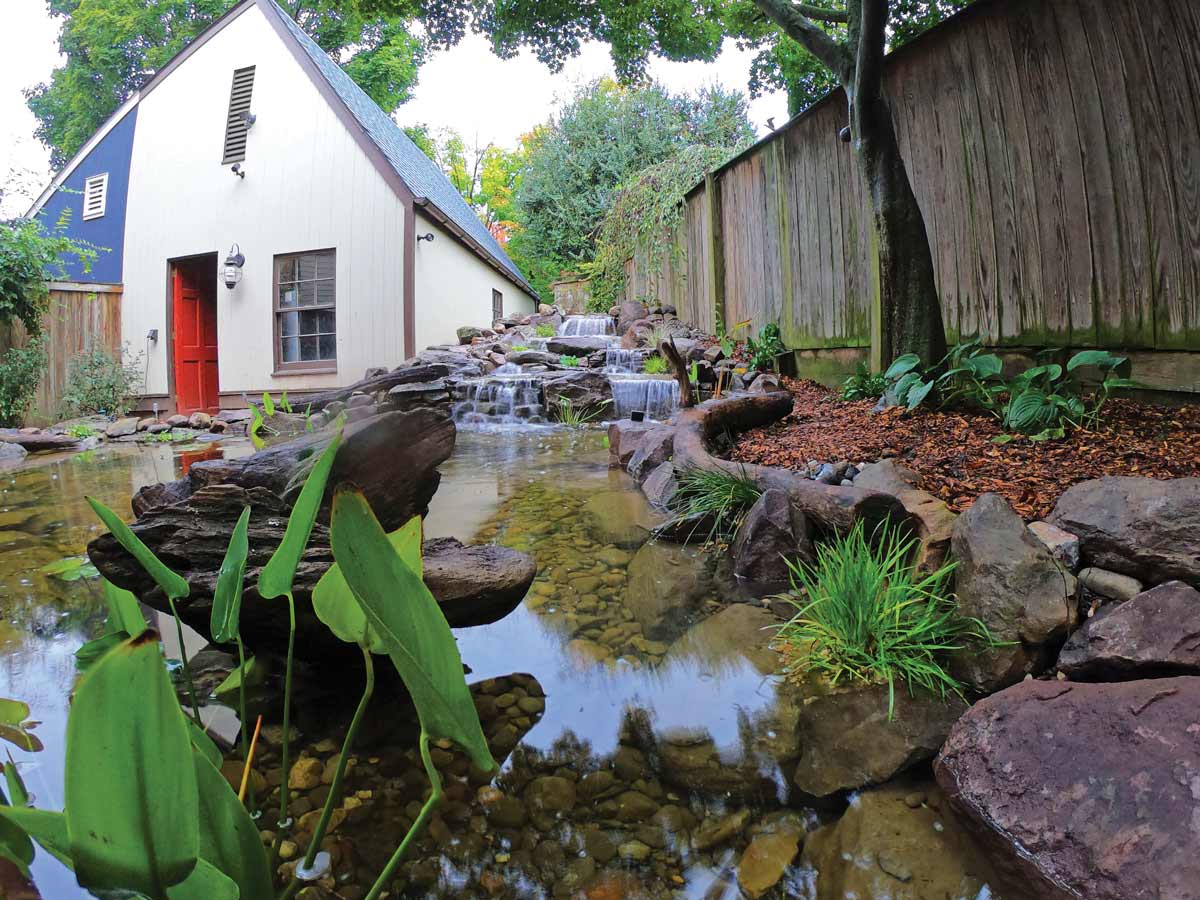
C.E. Pontz Sons converted this Lancaster City backyard from a useless patch of weeds and grass into a tranquil oasis, proving that even the smallest of spaces can be transformed into something special.
For many, the backyard is a place of solace, which became especially evident during the past year. Not only did the backyard become an escape from the four walls of quarantining but, according to a recent study from the University of Washington (UW), having nature close to home is beneficial for mental health. A key aspect of these benefits is maintaining a level of attention and mindfulness while enjoying the outdoors. “Experiences with nature can slow the mind’s natural process of rumination in which we fret about the past and worry about the future in potentially destructive ways,” says Peter Kahn, a UW professor of psychology and environmental science.
Dedicating a space in your yard to tranquility – such as a meditation garden or waterfall – can work wonders for improving your overall mental health and well-being. As you will see, Lancaster landscaping companies are proving that no space is too small for a metamorphosis.
A City Backyard Oasis

Water features create an interactive ecosystem, attracting diverse wildlife and changing with the seasons.
According to Bobby Kenyon of C.E. Pontz Sons, a water feature is the most impactful way to change your backyard. “It is a living, breathing feature that changes daily and seasonally. It draws you outside and gives you a space to unwind and relax, as well as entertain and play,” he explains.
Photos courtesy of C.E. Pontz Sons
rWater features are therapeutic, providing soothing sights and sounds that create a relaxing environment to help you destress. They also attract all types of wildlife, including birds, frogs and butterflies (some even allow for pet fish to be introduced). The interactive ecosystem allows you to learn all about wildlife, providing you with a new purpose and environment to care for.

The clients’ backdoor opens up to a beautiful view of the waterfall. An adjacent patio allows them to enjoy the water garden, as well.
In October 2018, C.E. Pontz Sons, which specializes in backyard water features, transformed a small backyard in Lancaster City into an oasis. Before the overhaul, the space was considered useless. “It was basically a small, patchy-grass area with mostly weeds. It wasn’t big enough for a real lawn, so the maintenance of mowing made little to no sense. [The clients] wanted something interactive and aesthetically pleasing,” Bobby says. “They were looking for some type of water feature, and well, water is what we do best.”
Over the course of a week, the C.E. Pontz team transformed the barren backyard into a lush, relaxing ecosystem. The project did pose some challenges in that the space was only accessible through a door in the client’s garage. “Typically, a project this size can be accomplished much quicker, but all the rock and materials had to be carried into the garage and through the back door of the garage to the yard,” Bobby explains. Thankfully, their excavator was able to just barely squeeze through the door.

The space was only accessible through a small door in the garage. Fortunately, C.E. Pontz’s excavator was able to squeeze through.
After excavating the soil and creating tiers for a waterfall to flow into the pond, the team installed liners and a pumping system for the water, all of which were supplied by Aquascape Inc.
Once the liner was put in place, it was time to organize the rocks and gravel – from Penn Stone – around the borders of the feature and along the bottom of the basin. After starting the water, the team added plants and grasses into the pond. The area surrounding the water feature was then mulched. The final element was a slate walkway that leads to a small patio, perfect for enjoying the sights and sounds of the waterfall.
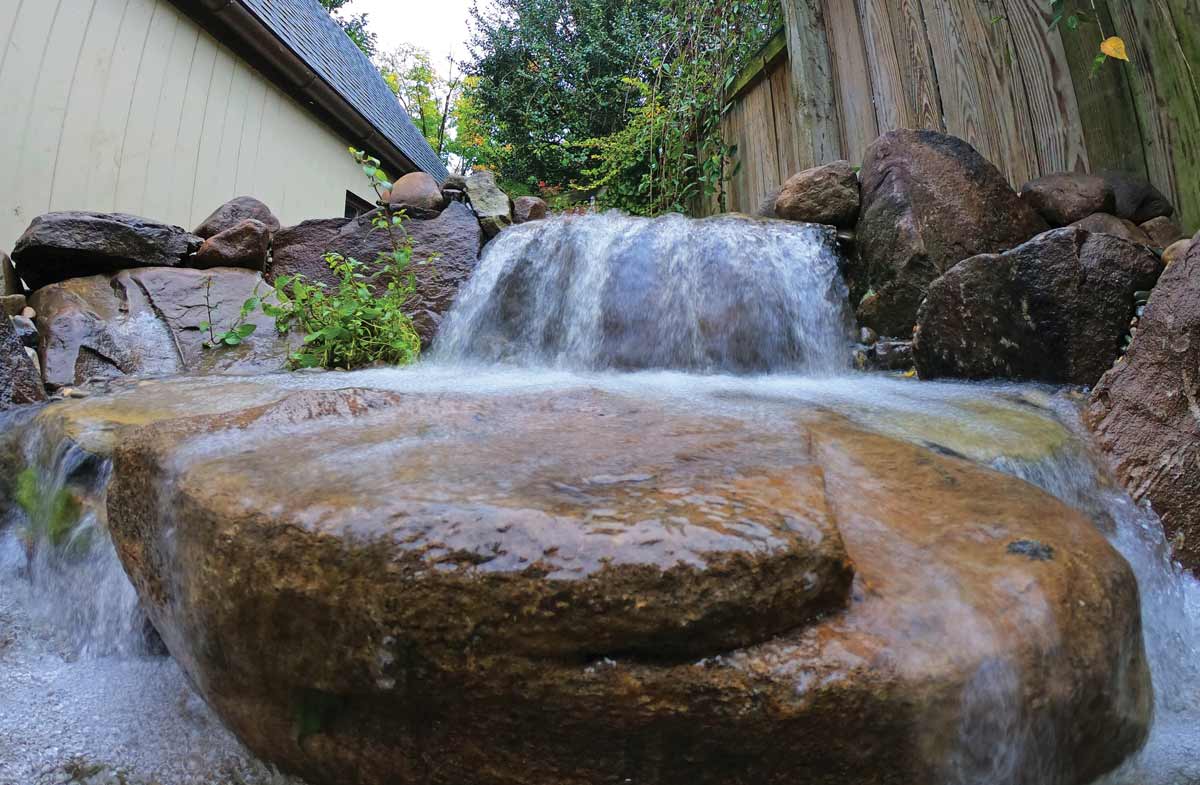
Water features are therapeutic, providing a space to unwind and relax while enjoying the sights and sounds of flowing water.
Overall, Bobby says maintenance on water features like this project are relatively low. Adding the waterfall element to the feature creates agitation and prevents the pond from becoming algae-filled. “We install ponds with a skimmer system similar to a pool where service debris is collected into a skimmer basket that can easily be removed and dumped out,” Bobby says. “As long as you have proper size filtration, keep your fish count in check and don’t overfeed them, maintenance is minimal.”
For more information on C.E. Pontz Sons, call 717-394-9923 or visit cepontzsons.com.
A Suburban Rain and Meditation Garden
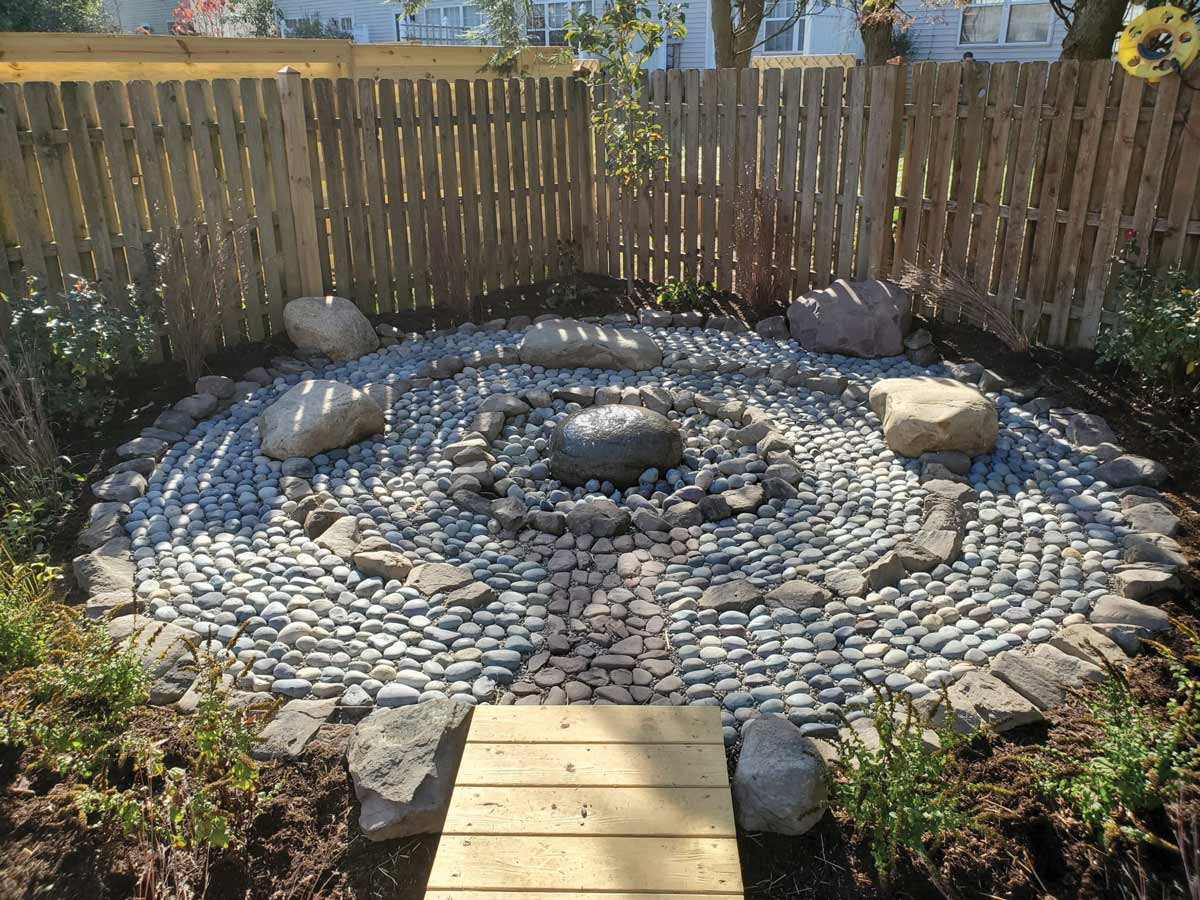
The client’s young son designed a meditation area, including a water feature and labyrinth, that Indian Run Landscaping incorporated into the design of the rain garden.
Indian Run Landscaping created the ultimate backyard getaway – a combination meditation and rain garden – that not only solved an environmental issue, but provided aesthetic beauty to a corner of the backyard, as well as mental health benefits for the homeowners.
Photos courtesy of Indian Run Landscaping
Pivot has become a pandemic-related word that even applies to the building industry. Consider the Manheim Township homeowners who were in the process of planning an addition for their home, only to be informed by the township that their stormwater would need a place to go. Their builder suggested a rain garden, which led to Indian Run Landscaping’s involvement in the project.
Rain gardens are a cost effective and low maintenance way to reduce a property’s runoff. Every time it rains, water runs off impermeable surfaces like roofs and driveways, collecting pollutants such as dirt, fertilizer, chemicals, oil, garbage and bacteria along the way, according to the Groundwater Foundation. The polluted, untreated water enters storm drains and flows directly into nearby streams and ponds.
The Environmental Protection Agency estimates that pollutants carried by rainwater runoff account for 70% of all water pollution. Rain gardens, which are depressed areas in their surrounding landscape, collect this water, which is then filtered by the vegetation and surrounding soil. Rain gardens not only provide localized stormwater and flood control but also help to preserve native vegetation and attract birds, butterflies and insects.
The client took this opportunity to transform an unused corner of their yard. “Their young son designed a meditation-garden area that he wanted to incorporate into the design of the rain garden,” says Nikki Sandman, who is Indian Run’s social media and marketing manager. Reminiscent of a Zen garden, the son’s plan included a labyrinth and a water feature.
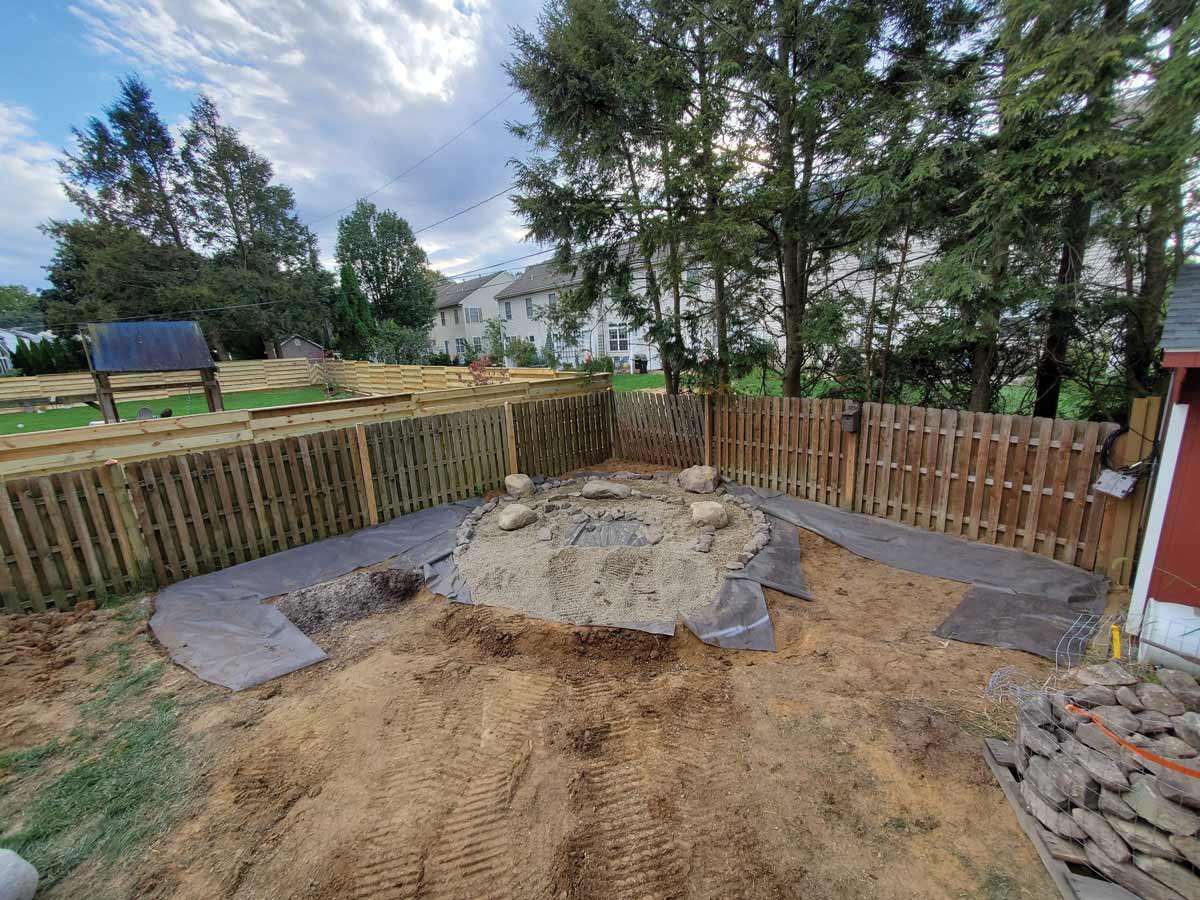
After the beds were removed, Indian Run Landscaping excavated and constructed the area to meet the specifications for a rain garden.
Originating in Japan, a traditional Zen garden is a minimalist dry landscape comprised of natural elements like rocks, sand, gravel and wood. Many incorporate manmade components such as bridges, lanterns and fences. The minimalist structure and décor are meant to provide a respite – devoid of distraction – for meditation and contemplation.
In this case, pairing the meditation and rain gardens would create a peaceful escape from the outside world while also benefiting the surrounding environment. Indian Run revised the custom design of the rain garden to incorporate the son’s ideas and to meet the requirements of the township; the meditation garden would be the focal point of the corner, while the rain garden would surround it. After finalizing the design, installation began, which took about five days.
Work began by removing the overgrown raised beds in the corner of the yard. The area was excavated and constructed to meet the specifications of the township’s Stormwater Management Plan. Inside the rain garden, the team constructed the labyrinth with a bubbling-boulder water feature as the central point. Large river boulders were placed around the feature for seating. Smaller rocks – some from the family’s summer vacation – as well as stones, pebbles and gravel filled the rest of the labyrinth. (Indian Run also worked with Penn Stone to obtain materials for the labyrinth.)
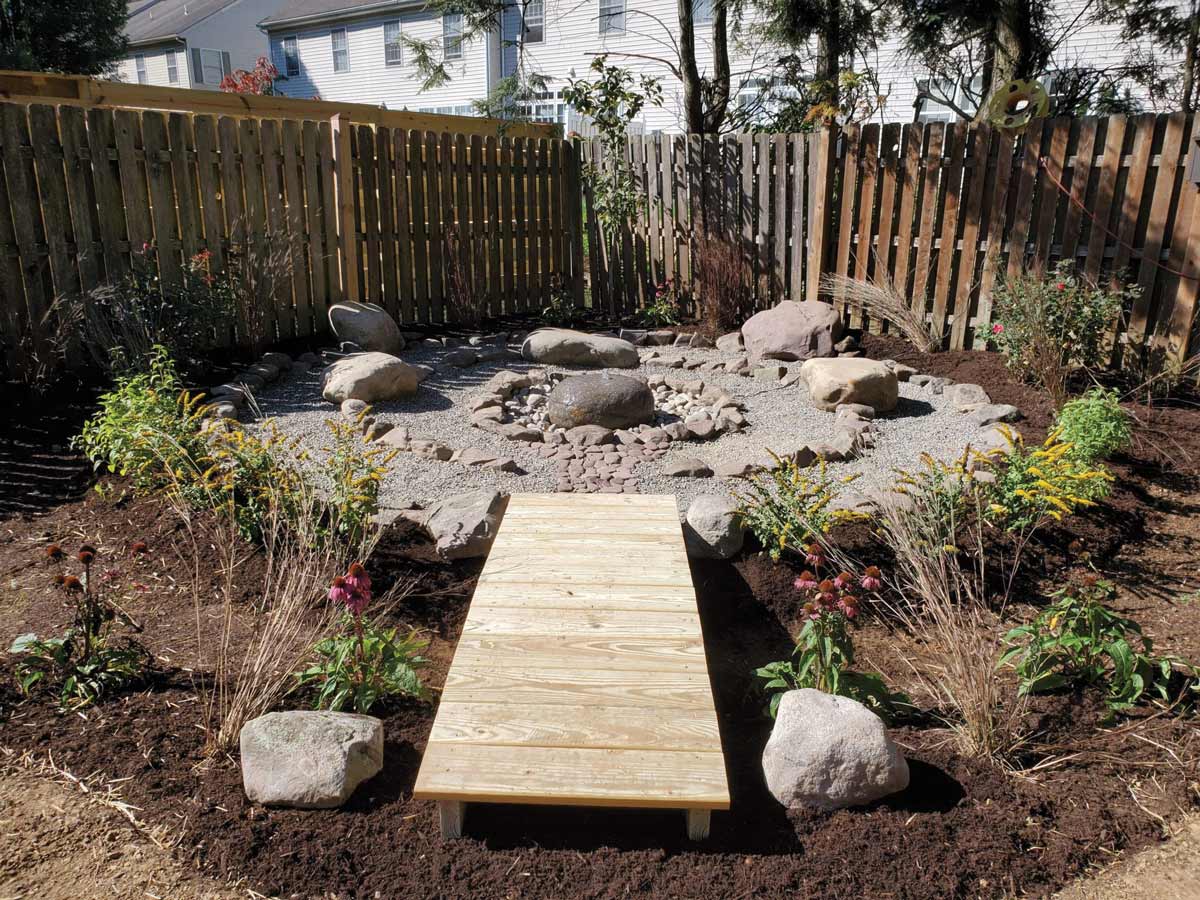
A custom-built bridge provides access across the rain garden and into the meditation area where a bubbling-boulder water feature is the central point.
A bridge, custom built by one of Indian Run’s foremen, was installed to provide access across the rain garden and into the meditation area. The bridge was made with a premium, pressure-treated pine wood that will last through the seasons.
Wildflowers, native perennials and shrubs, supplied by Mountain Spring Nursery and Ziegler’s Ponds and Aquatic Nursery, were planted throughout the space for the functionality of the rain garden and to add to the relaxing atmosphere of the mediation area. After mulching the beds, the Zen space was complete.
“The plantings will need to be maintained as appropriate for each species, and weeds will need to be removed if they are found in the plantings and rain garden,” Nikki explains, highlighting that the space is relatively low maintenance.
To learn more about Indian Run Landscaping, call 717-285-2750 or visit indianrunlandscaping.com.
Making the Most of a Small Outdoor Space
The first step to transforming a small space is to consider your lifestyle and how it translates to your outdoor-living area, according to London-based garden designer Ula Maria in her book, Green: Simple Ideas for Small Outdoor Spaces. Do you want to dedicate the time and space to growing a garden? Do you want to make it a fun area for your kids to play? Or would you simply like a relaxing setting to enjoy the warm weather? To make the most of your space, it is crucial to contemplate how it will best serve you. “All it takes is some creativity and imagination,” Bobby Kenyon of C.E. Pontz Sons remarks. Yards, balconies, windowsills and even rooftops all have room for possibility. No space is too small.
Ask a professional.
Nikki Sandman of Indian Run Landscaping emphasizes the importance of consulting with experts for ambitious home projects. “Working with a designer is key so that the client is getting an outdoor space that works best within their space and budget and is functional for their family,” she explains. “It is important to work with a full-service landscape and hardscape company that will be able to provide design, installation and maintenance services.”
Bobby also recommends taking a look at the websites and social media of landscaping companies or gardening publications to create a vision for your project. “We have tons of inspirational photos of yards of all sizes and shapes on our social media where people can browse ideas and get inspired. I’m happy to help with any questions people may have. I always respond to comments and questions even if they are planning on DIY,” Bobby says. “We can still help.”
Create privacy.
Use fences and plants to envelop your space. Stripped-down fences with climbing plants can add color and soften the look of blocky fences, Indian Run Landscaping suggests. A tree line, oversized hedges or ornamental grasses can also create subtle barriers. Creating focal points based on statement decorations or water features, can also help to draw eyes away from surrounding buildings.
Don’t forget about vertical space.
Recognize that you aren’t solely limited to the square-footage of your yard and take advantage of the vertical plane. Hang planters or other décor from railings and ceilings. Stack planters and containers on shelves or create a “living wall.”
Consider installing green roofs on underused surfaces.
Extension roofs, garden sheds or even rooftops of storage areas can all be transformed into beautiful small-scale landscapes, according to author Ula Maria.
Get creative with storage options.
Many urban yards are too small for traditional storage options, like garden sheds. Ula recommends utilizing outdoor cabinets or shelves and combining storage with chairs, benches or tables.
Lighting can transform your space.
Consider using a spotlight to highlight the focal points of your outdoor space, such as prized plants, interesting planters or water features. Warm lighting – candles or strings of café lights – provide a cozy vibe. Interesting lamps and lighting fixtures can also add a unique element to your space.
Outdoor and patio seating continues to trend.
“As the pandemic has forced us to spend more time at our homes, we have become more aware of the importance of having an outdoor space to relax and unwind at home,” Nikki explains. “Patios and other outdoor-seating areas will continue to be high on everyone’s list.” A focus on making outdoor-living spaces comfortable for year-round gatherings is also increasing. Investing in heaters, weather protection and fire pits (depending on your space and local ordinances) can help you get even more use out of your yard.
Enjoy the sounds of flowing water.
Nikki and Bobby both agree that water features – bubblers, fountains and ponds – are also high on everyone’s lists. These features provide relaxation and stress relief, not to mention a beautiful focal point for your space.
Garden behind glass.
Mini greenhouses come in a range of sizes, so there are options to suit every budget and space. These greenhouses are perfect for growing tropical plants or stretching your garden’s viability into the fall season.
Add your personality to the space.
Feel free to experiment with unique rugs, cushions, lighting, containers and planters. You can always switch it up next year!





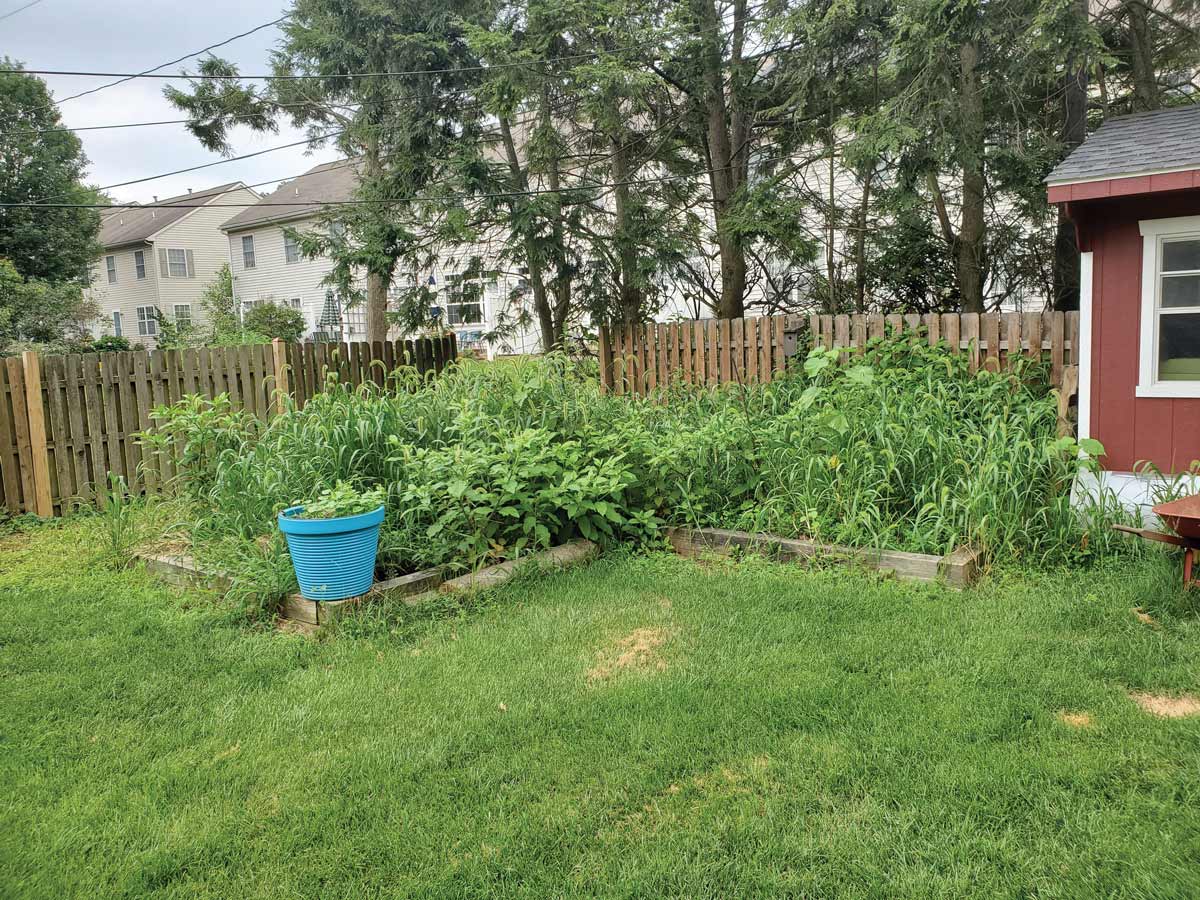
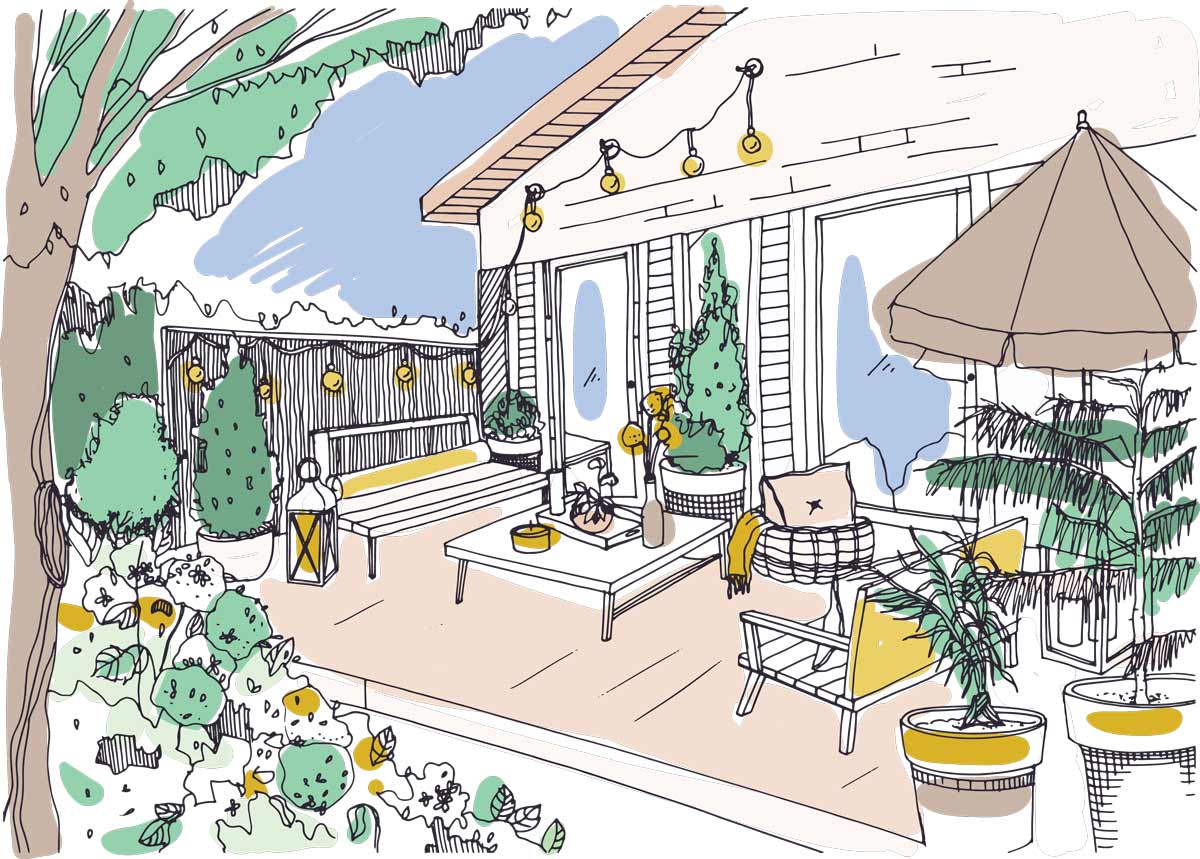
SHARE
PRINT